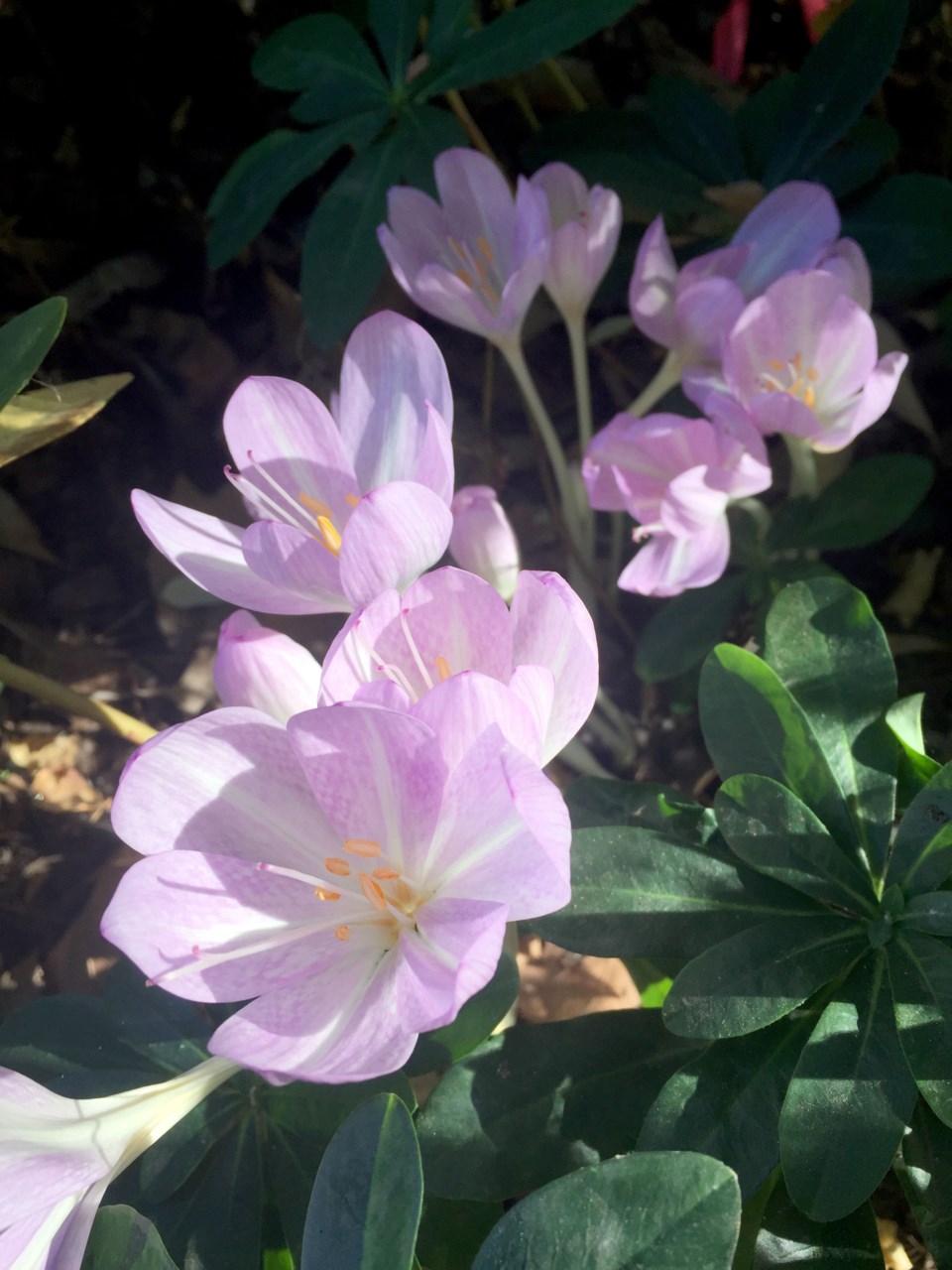I write about colchicum bulbs almost every summer because they are easy to grow and are so important for fall colour.
August is the only time of the year to plant these so-called ‘autumn crocuses’ that bloom in September!
In fact, they are not really a crocus at all, but rather, they belong to the lily family and are native to the Mediterranean region.
A colchicum bulb can become huge and in time, can produce 19 to 25 flowers, one right after the other, until they’re all open in a profusion of colour.
A lady, who used to grow thousands in her backyard in Vancouver, told me it takes about two years for a small bulb to grow into a huge specimen, at which point it splits into four smaller ones.
Small bulbs will produce five to seven flowers; mid-sized bulbs will have about a dozen blooms.
I have learned the hard way that these bulbs love a sunny, well-drained, yet moist location, with average soil.
One year we planted them in several shady spots, only to have them gradually deteriorate to the point of no return.
You can leave them in the ground to naturalize, if that is the effect you wish to create.
A single corm of a large colchicum hybrid can easily multiply to cover nearly 900 square centimetres of garden.
Just imagine what a few well-placed groupings throughout your garden could do.
Plant them about 10cm deep and 15 to 20cm apart.
They need some room, not only to multiply, but also for the huge foliage which will develop the following spring.
These fascinating bulbs can bloom indoors simply by leaving them sitting on a windowsill.
It's best to set them on two inches of gravel placed in a saucer.
The flowers won't last quite as long, nor will they have the same intense colour, but they will bloom and can still be planted outside to grow on for next year.
Each year in late April, just as the tulips are nicely in flower, huge masses of strap-like leaves appear and grow about one foot in height.
After two to three weeks, they disappear as suddenly as they arrived, having provided all the food the bulb needs.
Colchicums are quite hardy and do well from zones one through nine.
Colchicum speciosus, which blooms in September and October, is most often a bright violet-pink, while Colchicum album is the beautiful, seldom-seen, white variety. Among the hybrids, 'Lilac Wonder', with its attractive lilac-pink flowers, is the most popular. The double purple blooms of 'Waterlily' are unusual and quite lovely, but its heavy blossoms are often knocked down and spoiled by autumn rains.
Colchicums should be planted in areas where they can be naturalized without interfering with other plants.
Under-plantings around flowering shrubs, like white hibiscus or dwarf hydrangeas like ‘Bobo’, make a lovely contrast when the bulbs bloom each fall.
Another wonderful combination is to plant them under pink snowberries (Symphoricarpos) for a great autumn display.
Colchicums are only dormant in July and August, so you must be quick on the draw to get them planted immediately for any kind of showing this fall, but they are well worth the effort. The main bulb supplier for BC has recently received a shipment of colchicums for distribution to garden stores, so they should be widely available.
I know there are many gardens out there that really need a lift in September, especially after all the hot weather, and these precious fall crocuses can add that little spark of colour.
Think of them as fall messengers reminding us that in spring our gardens will be inundated with colour from their peers.
Also, a quick reminder that now is the only time of the year to find saffron crocus, which need to be planted now in order to bloom in about three weeks.
page \* arabic2





